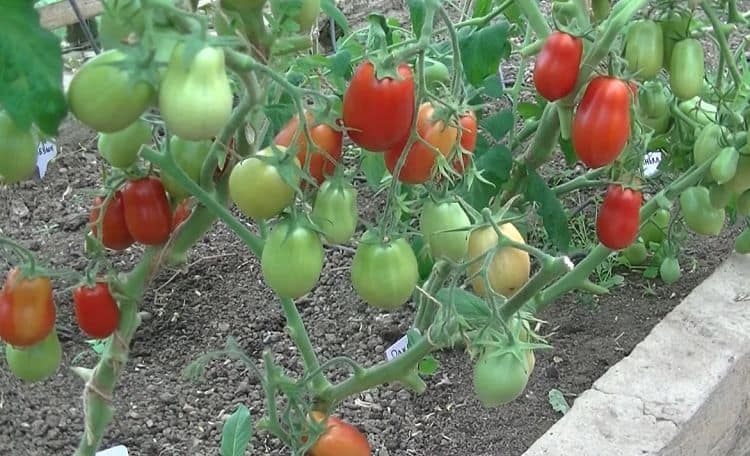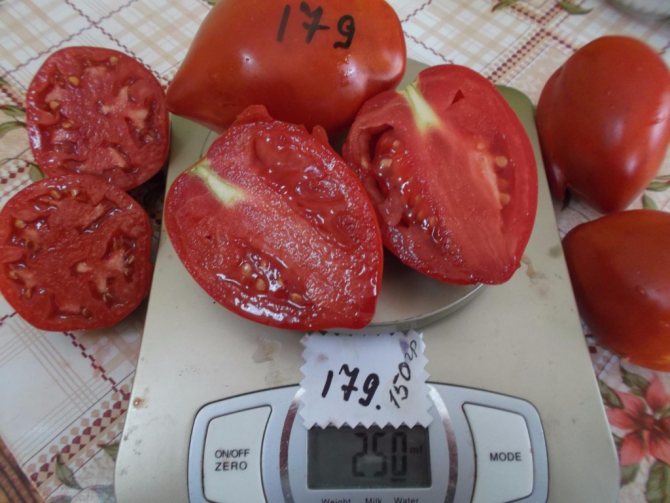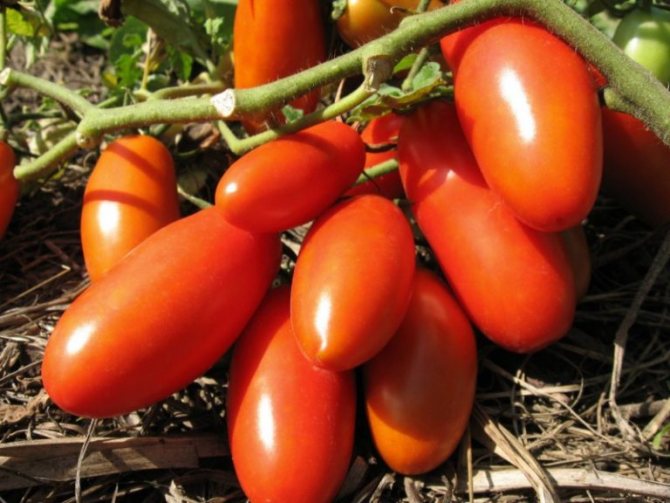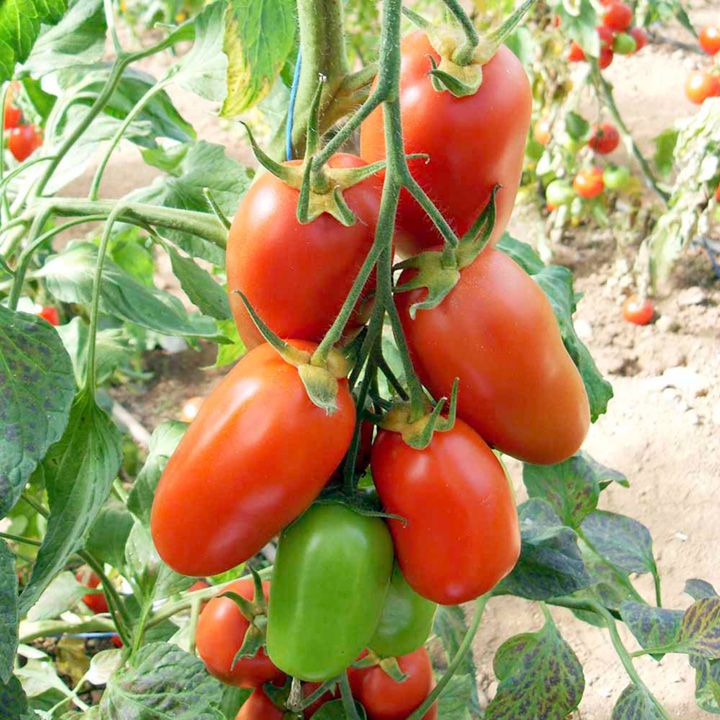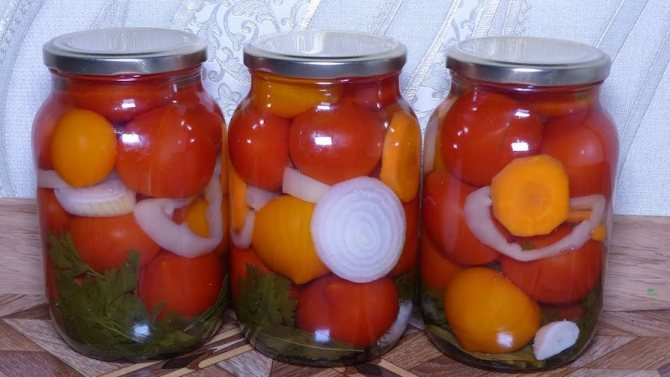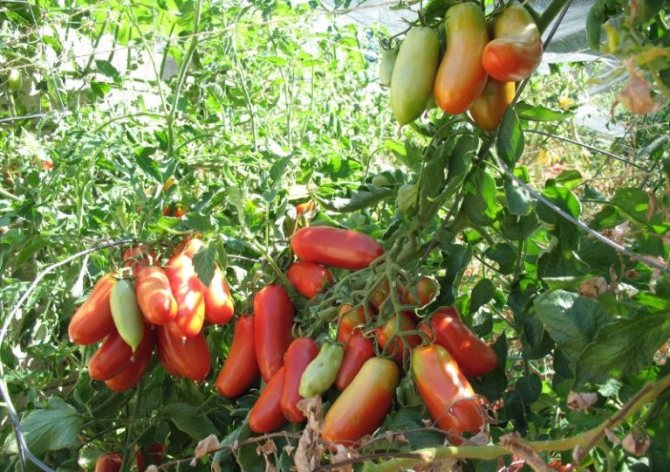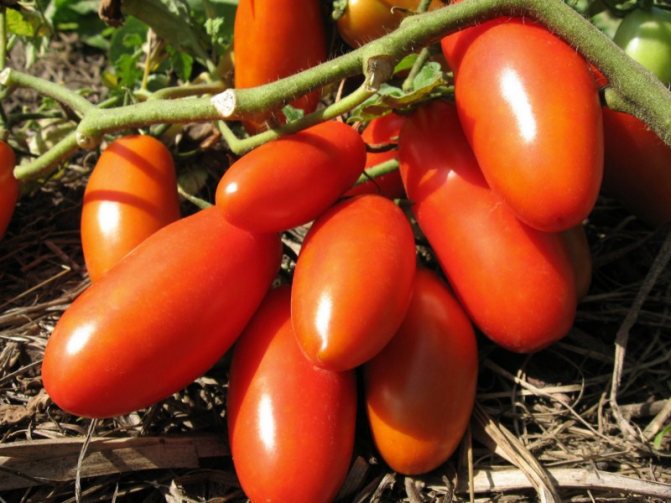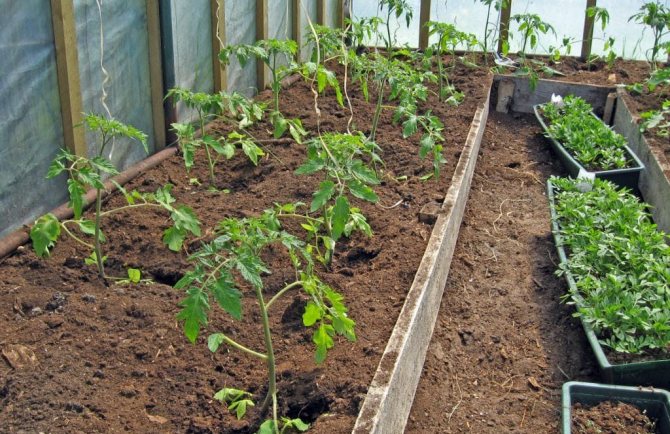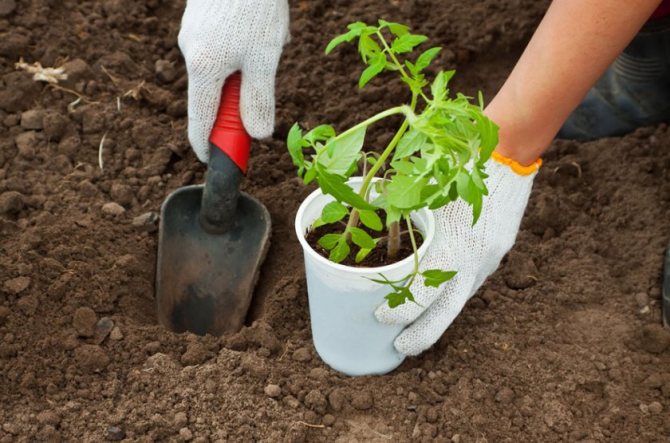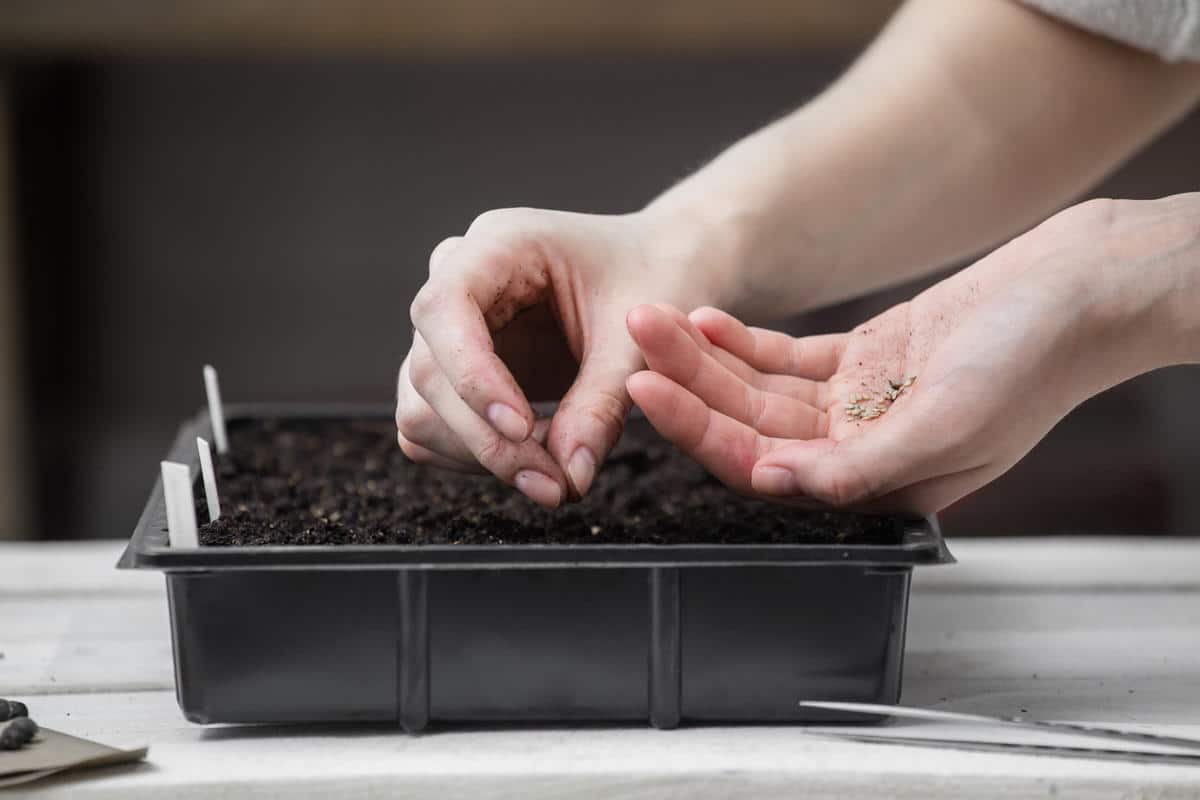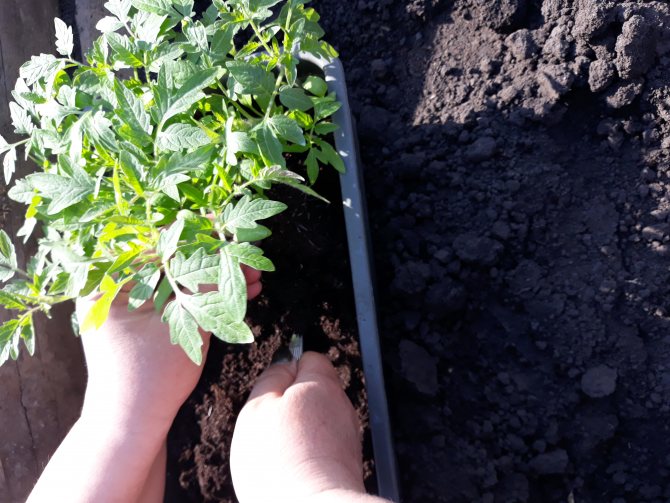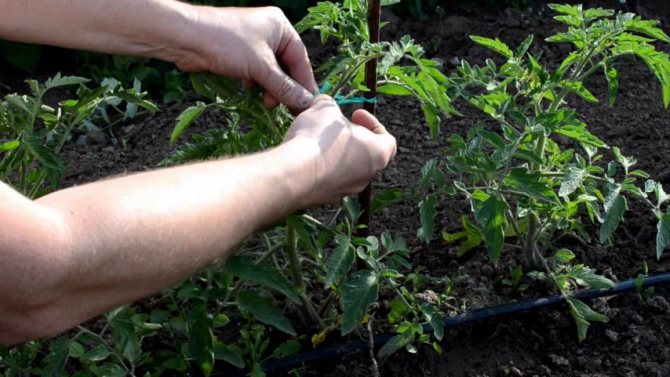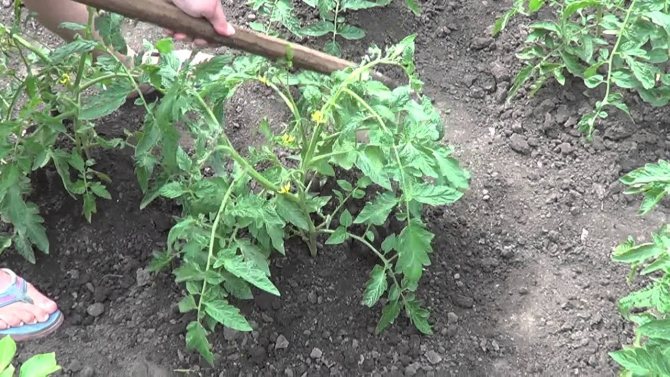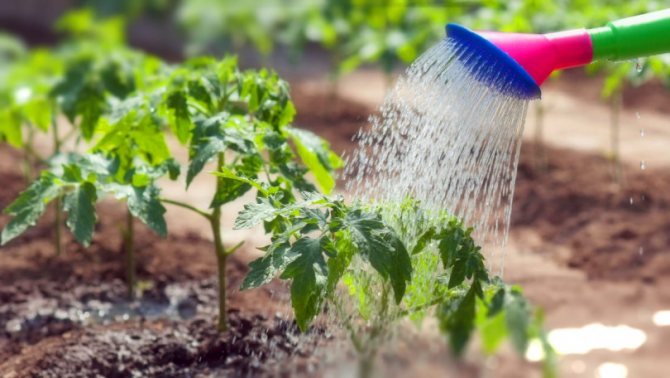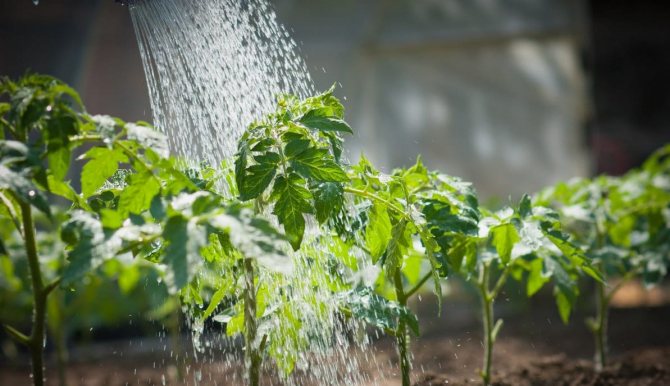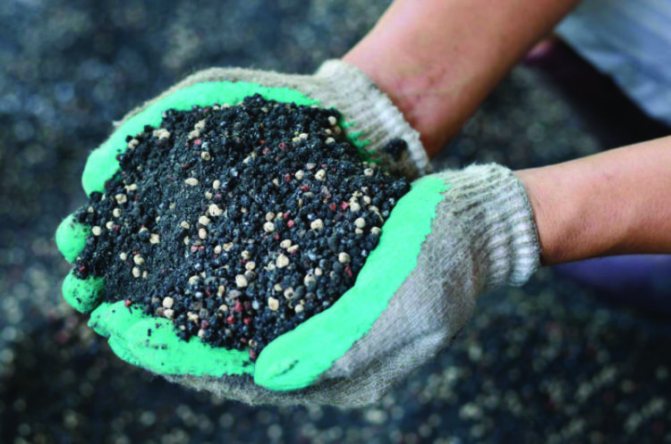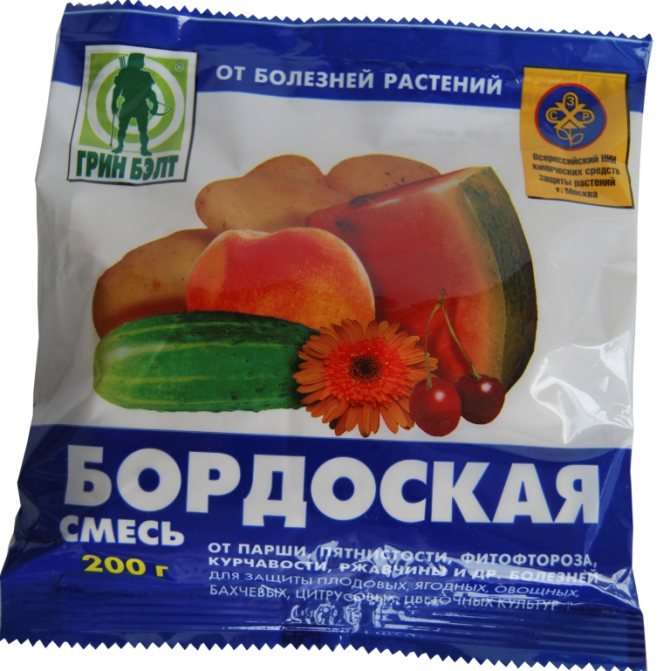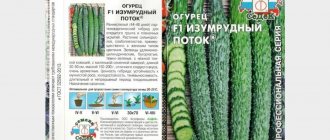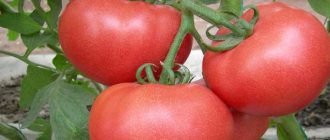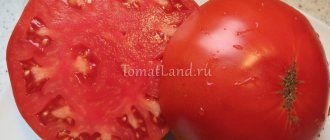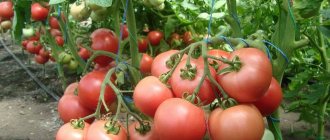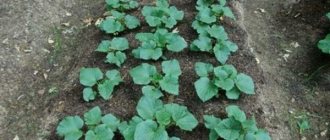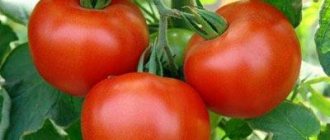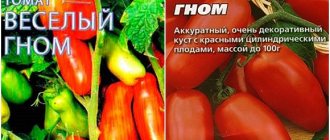How the variety was bred
The Raketa tomato was bred by Russian breeders A.N. Lukyanchenko and S.F. Gavrish, who worked at an experimental station located in the Crimea at the end of the third quarter of the last century. The variety has been tested on experimental sites for several years and was entered in the State Register of Agricultural Achievements in 1980.
At the same time, it was recommended to grow the Raketa tomato in the south of the country in open ground in the beds in the garden, and in more northern regions in film greenhouses or greenhouse conditions.
Tomato characteristic
Distinctive features of the "Raketa" variety, according to which tomatoes became the owners of the beds on personal and farm plots, are: compactness, a good yield indicator, and minimal maintenance costs.
Productivity and fruiting
For a low-growing shrub of the standard type, the "Raketa" tomato has a rather high yield. Due to its compactness, planting density is allowed up to 6 plants per 1 m 2 in an unprotected area. In greenhouse structures, the tomato grows taller and becomes more spreading, here the planting density is less.
Agricultural techniques are not reflected in the amount of harvest. 2.5 kg of fruits are harvested from one tomato, in the open field from 1 m 2 an average of 12 kg of tomato grows. In the greenhouse, the level of the indicator is kept by extending the term of fruiting. Raketa tomatoes reach biological ripeness by mid-August, early September, depending on the region and weather conditions.
If the spring is late, the planting of seedlings is delayed, the dates for harvesting fruits are shifted. The lack of moisture affects the amount of the crop, the "Raketa" tomato loves abundant watering, tolerates excess ultraviolet radiation well. In a shaded place, tomatoes are smaller, growth is lower.
Scope of the fruit
A variety for universal use. Tomatoes are well stored and transported. On farm plots they are grown for delivery to retail outlets and restaurants. Used in the food industry for the production of tomato paste, ketchup, sauces. The harvested crop in a personal backyard is used for salting as a whole, as an ingredient for homemade preparations. Taste assessment of Raketa tomato is high.
Disease and pest resistance
Raketa tomatoes do not belong to hybrid varieties, they do not genetically have immunity against infection. The tomato is recommended for growing in open areas, so there is a risk of late blight, mosaic infection, leaf spot. Gray rot does not affect tomatoes. The degree of culture sustainability depends on compliance with agricultural standards. Pests affect the variety, like all representatives of the nightshade species.
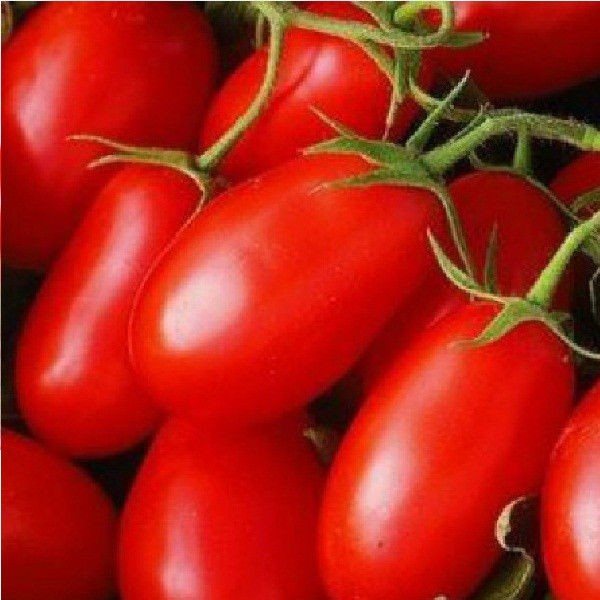
Advantages and disadvantages of the variety
The advantages, according to the description provided by the originators of the Raketa tomato variety, include:
- compactness of bushes, they take up little space on the site;
- high yields, which are achieved due to planting density;
- no need to remove stepchildren from a standard tomato and in the formation of a bush;
- undemanding to the composition of the soil;
- good UV tolerance;
- resistance of fruits and root system to gray rot;
- convenient fruit size;
- the possibility of cultivation in closed and open conditions;
- long shelf life, resistance to transportation.
The disadvantage of the culture is the tendency to cracking the fruit, demanding watering.
Tomato Rocket: variety description
This tomato variety belongs to the determinant type,
therefore, in the beds in the garden, these bushes grow no more than 0.5-0.6 m in height. The Raketa tomato plants are standard, do not form a large number of side stems, pinching continues only until the buds appear. All stepchildren go to the formation of bushes.
On a note!
The Raketa tomato belongs to vegetable crops with late ripening of tomatoes - the harvest begins 130-145 days after the germination of the seed.
The bushes are compact, in diameter they can reach no more than 0.5 m, the Rocket does not require pinching and shaping.
Photo of a tomato Raketa
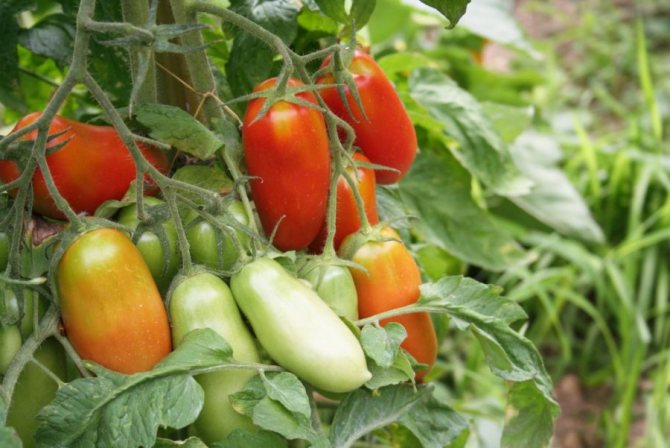

The central shoot lignifies as it grows, becomes powerful and strong and holds well all ripening fruits, its color is light brown with a greenish tint. Usually, it is not required to tie the Raketa tomato bushes to strong supports.
Lateral stems - thinner, green, their number is average
... But some growers remove the upper shoots in order to increase the yield of the bush.
Medium leafy shoots. Foliage - typical for tomato, narrow and elongated, with large jagged edges, dark emerald color, without pubescence.
The flowering of the bushes of this variety is abundant, the shoots are covered with small flowers with yellow petals. The Raketa tomato variety is not self-pollinated, therefore, when grown in greenhouses, it is required to lure pollinating insects. As a result, the yield of the Raketa variety in the open field is higher than in greenhouses.
BEST TOMATOES!
Tomato Pink GiantTomato Sevruga or PudovikTomato variety Japanese
The buds are usually collected in cluster inflorescences, the first of which is formed after 4-5 true leaves, and each next cluster is laid every two leaves. Each cluster usually contains no more than 7 tomatoes.
Fruiting of the Raketa tomato variety is extended in time, the first fruits usually ripen in the last decade of August - the first decade of September, and tomatoes continue to ripen for about 55-60 days.
In greenhouse conditions, fruiting is longer than in the beds in the garden in the open field
... However, determinate varieties of tomatoes are grown indoors, usually in regions with a short cold summer period; in warmer climates, it is more expedient to cultivate them outdoors.
On a note!
The main advantage of the Raketa tomato is the same size and weight of ripe fruits. But it should be noted that the largest number of ovaries is formed on the lower brushes, but the higher the inflorescence, the less fruit is formed on it.
Common tomato Rocket. Overview, description of characteristics - video
The shape of ripe tomatoes is oval, plum-shaped with a sharp tip
... The size of the fruit is up to 7 cm, and the average weight is 60 g. The peel is dense, not elastic, bright red in color, a dark yellow spot is clearly visible near the stalk. The skin is smooth, smooth with a characteristic gloss, it can crack under certain conditions.
The pulp is slightly compacted, juicy, without voids, dark red, divided into 3 seed chambers with a small amount of seeds and liquid.
The taste of ripe tomatoes is sweetish, with a characteristic sourness; each ripe tomato can contain up to 3.5% sugars.
As Tomato Raketa is not a hybrid, its seeds can be harvested for subsequent planting, and grown tomatoes retain all varietal characteristics.
The harvested fruits can be transported to any distance, they can be stored for a long time in appropriate conditions.
What amateur gardeners say
Testimonials from users growing Raketa tomatoes:
Evgeniya:
“Excellent variety. The fruits are strong. Ideal for salting. The taste is sweet and sour. I made it according to two recipes: a sweet tomato and in its own juice (although I took the juice from other tomatoes). And from both options in awe. Before putting it in the jar, I pierced each tomato with a toothpick in the ass and therefore brought out whole fruits on the table that did not burst. They were removed from the bushes intact, as they say, they do not crack. Not capricious at all. I poured 5-7 liters per hole once when planting, then covered the whole bed with "spunbond", poured it a second time when the color started and they forgot about them. Opened only for weeding. They removed the Spunbond only in July ... ".
Lydia:
“I have been growing since the 70s. Never let you down. Any summer I am with tomatoes and do not need any greenhouses and greenhouses. The variety is unpretentious, resistant to diseases, it never has any phytophthora and similar sores. I will never change for any other variety, I grow from my own seeds, the yield is excellent. "
A source
Ipatova Alina Vladimirovna, Votkinsk:
“I planted this variety for two years in a row only in open ground. I do not have a large greenhouse, but I believe that it will ideally only grow indoors. He fell in love with me for his short stature, he can not be tied up. In addition, you can safely forget about removing the leaves, there are simply not many of them. I chose this tomato because I like to pickle small oblong tomatoes. Of course, there are not so many fruits on the bush, and they must also be processed from phytophthora. Any drop in temperature in summer - and they can be thrown away. "
A source
Scope of the fruit
The harvested fruits are distinguished by their universal application:
fresh, used for the preparation of vegetable salads, snacks, as well as in conservation. Small fruits are ideal for pickling and pickling, making tomato juice, paste and lecho.
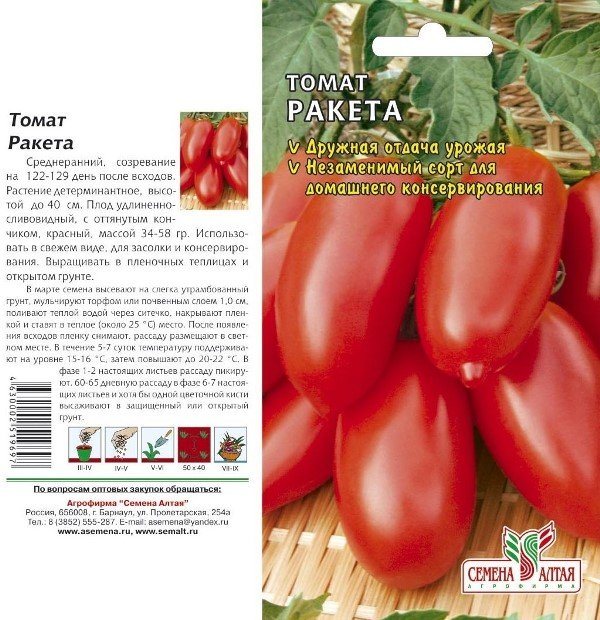

The harvest
The variety has an average yield, about three kilograms of fruit can be harvested from one bush. The variety belongs to the varieties of universal use, that is, it can be used daily, preparing various salads, appetizers, first courses, side dishes from them. Preservation using these tomatoes will be excellent, since, due to their small size, the fruits are perfectly pickled and salted, both whole and cut. Tomatoes of this variety are perfectly stored and transported, even during long-term transportation they retain their taste and appearance.
The main advantages
The main advantages of Rocket tomatoes are outlined below:
- the bushes are compact in size, so more plants can be planted on one square;
- good yield for determinate tomato, even good;
- resistance to major diseases that are characteristic of this group of vegetables;
- no plant formation is required;
- harvested tomatoes can be transported to any distance and they are highly kept;
- ripe fruits can be harvested mechanically;
- the harvested crop has a good presentation and excellent taste
- Tomato Rocket can be grown in the garden, in greenhouse conditions and in apartments.
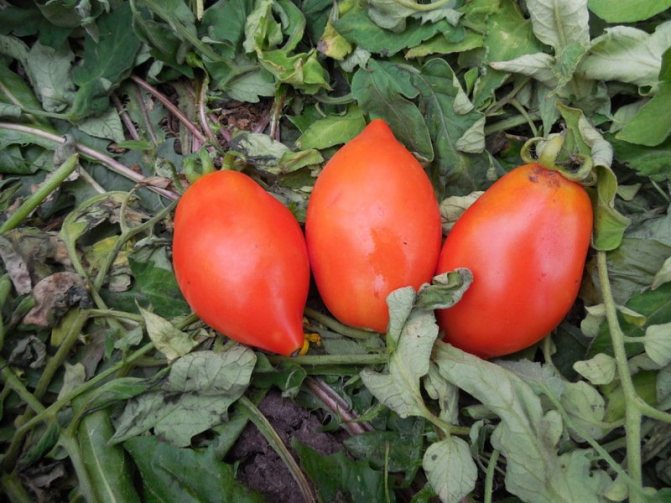

Of the disadvantages of the Rocket, it should be noted:
- many vegetable growers consider the simultaneous ripening of tomatoes a disadvantage;
- the taste of ripe fruits is not high enough;
- tomato Rocket requires constant and regular watering, as well as mandatory feeding throughout the season.
Growing rules
The "Raketa" tomato variety is grown from seedlings from self-collected or store-bought seeds.
Planting seedlings
Sowing of planting material is carried out in mid-March. The soil is preliminarily prepared for seedlings, it consists of 50% of the soil from the site where the tomato and 50% of humus will grow in the future. Planting algorithm:
- Soil is poured into low containers and watered abundantly.
- The seeds are laid out one by one per 1 cm in the prepared grooves.
- Cover with a layer of soil, peat on top.
- Cover with a plastic cap, put away in a warm, bright room.
Planting tomato Rocket and cultivation features
Only in the south of Russia, the seeds of the Raketa tomato are sown directly on the beds in open ground, in all other regions seedlings are preliminarily grown at home, and then they are transplanted to the designated place. Sowing tomato seeds Rocket for seedlings should be carried out about a couple of months before the proposed transplantation of plants to a permanent place.
Photo of planting tomato Rocket
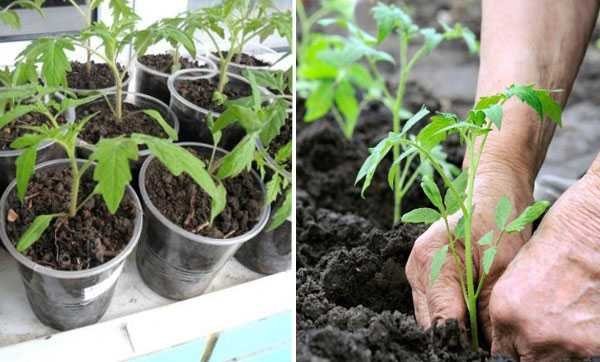

Seed preparation
The seeds bought in specialized stores have gone through all the pre-sowing preparation, it was carried out by the manufacturer of the seeds. But the seed that is harvested by vegetable growers from their beds should be prepared before sowing. It is usually soaked in a pink potassium permanganate solution for disinfection.
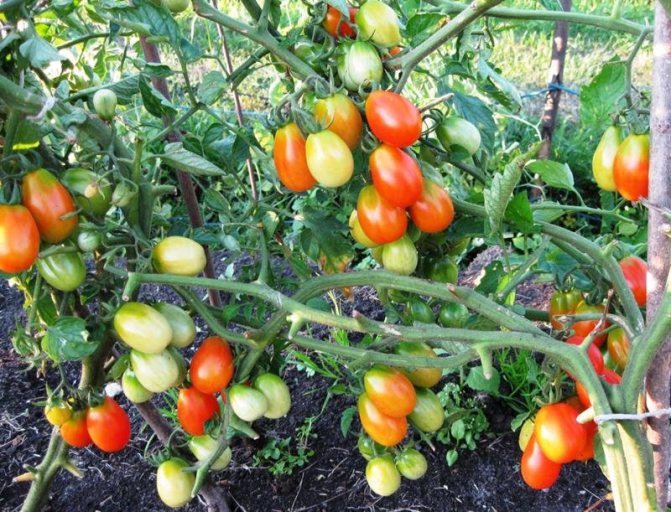

Before sowing, seeds should be germinated by wrapping them in damp gauze. Sprouted seeds subsequently sprout in the soil several days before dry seed.
Preparation of soil and containers
Soil for sowing seeds of the Raketa tomato variety is usually purchased simultaneously with seeds in specialized stores. If necessary, you can prepare the nutrient substrate yourself. For this, sod and leafy soil, peat and river sand are mixed in equal proportions. Wood ash is added to the prepared mixture.
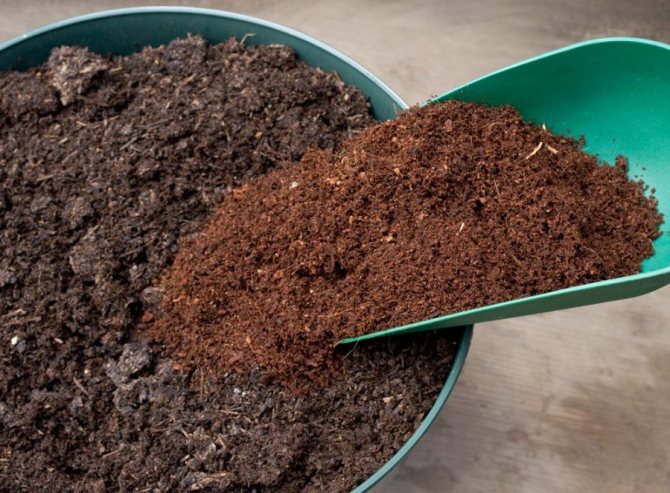

Home-prepared nutrient soil must be disinfected before being laid out in containers. For disinfection, use a pink solution of potassium permanganate.
The containers also need to be rinsed with a potassium permanganate solution before use.
Planting seeds for seedlings
Rocket tomato seeds are laid out on the surface of the soil at a distance of 1.5-2 cm from each other, sprinkled on top with a thin layer of nutritious substrate and watered with a spray bottle.
The containers are then covered with plastic to create a greenhouse effect inside, and placed in a warm, dark place until emergence. Usually, seedlings appear 5-7 days after sowing the seed.
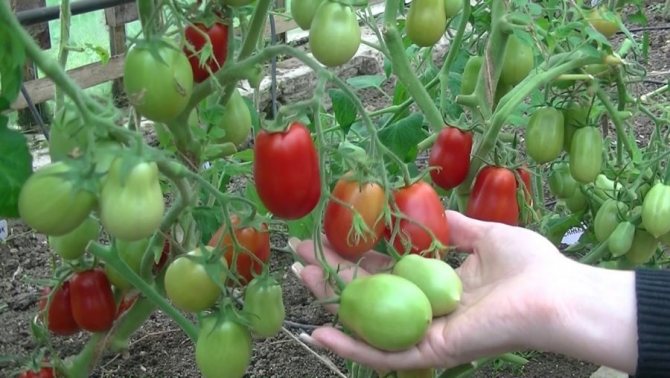

Further care of Rocket tomato seedlings
After the sprouts appear, the polyethylene is removed, and the containers are transferred to a well-lit place. The room temperature should be reduced by 5-7 degrees Celsius to harden the sprouts. Then the temperature in the room is raised to 22 degrees and it is maintained until the seedlings are transplanted into open ground or a greenhouse.
Important!
Daylight hours for tomato seedlings should be at least 12 hours. If natural lighting is not enough, then the plants need to be supplemented.
Tomato Rocket - video
After about 2.5 weeks, 2-3 true leaves appear on the seedlings, and they need to be planted in separate containers.
A couple of weeks after the diving procedure, the plants are fed with any nitrogen fertilizer
, which activates the growth of the aerial part and roots. 10-12 days after the first feeding, the seedlings of the Rocket tomato need to be fed again. To do this, you can also use nitrogen fertilizers or a solution of cow dung diluted with water in a ratio of 1:10.
A week before transplanting seedlings to garden beds, they begin to harden it. For this, the plants are taken out into the fresh air for a short time at first, but gradually the time in the fresh air of the plants increases.
Transfer to the beds
Transplanting the grown seedlings of the Rocket tomato to a permanent place of growth is carried out when the soil in the garden warms up to 15-16 degrees Celsius. The timing of planting the Raketa tomato in open ground is approximately the end of May - the beginning of June
(depending on the region of planting), it is important that there are no return frosts.Since these plants are compact, the distance between them in the rows should be about 0.3 m, and the row spacing should be 0.6 m. When planting seedlings in greenhouse conditions, these distances must be increased.
Plants are transferred into prepared holes along with a lump of earth in order to less injure the root system of tomatoes. The soil is poured into the pits, tamped and watered abundantly.
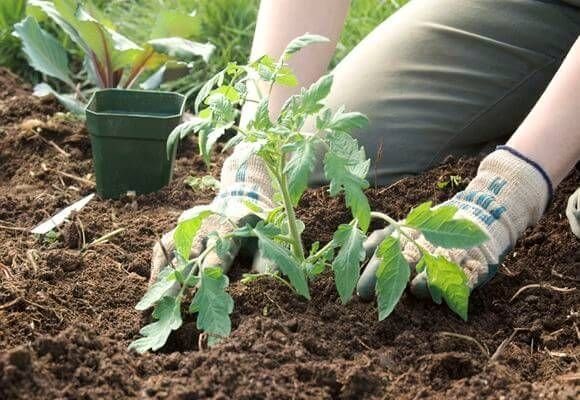

Transplanting tomatoes into open ground
The garden bed where the tomatoes will grow must be prepared in the autumn, as well as the greenhouse. First you need to dig up the soil and add compost. When spring comes, you need to deeply loosen the soil. Tomatoes are not recommended to be planted in the same place for several years in a row. It is best to plant them in place of garlic, onions, cabbage or legumes.
Note: Before planting tomatoes, they must be hardened. For hardening, tomatoes must be taken out to the balcony every day, each time increasing the time. This will help them adjust to the cold.
After transplanting, tomatoes need tying and watering. In case of rapid frosts, the bushes must be closed using film or agrofibre.
Further care
Tomato Raketa is distinguished by its exactingness to watering and the introduction of nutrients - the yield of the variety directly depends on the observance of these conditions.
Irrigation mode
The bushes of this tomato are watered strictly under the root with constant heated water. Up to 5 liters of water is poured under each plant - depending on weather conditions, while it is necessary that the soil is moistened to a depth of 0.3-0.4 m.
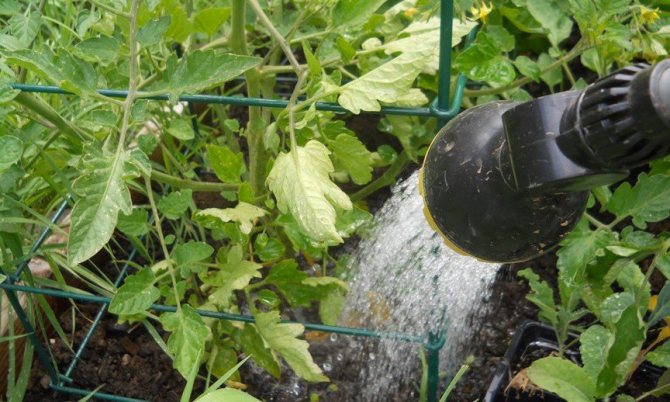

Tomatoes are not watered only in the first 7 days after planting, then moisture must be applied 2-3 times a week. You also need to ensure that there is no stagnation of moisture in the soil. Excessive moisture contributes to the development of tomato diseases.
Watering is stopped when the fruits begin to blush together; excessive moisture during this period can lead to cracking of the tomatoes.
CHOOSE TOMATOES:
Tomato Sugar BisonTomato AlsouTomato Mazarin
Garter and shrub formation
Many vegetable growers are not engaged in the formation of Raketa tomato bushes and its garter. However, in the process of fruit formation, it is recommended to tie the main shoot to a strong support so that the stems with the fruits do not lie on the ground - in this case, the fruits from contact with the ground may begin to rot.
Photo of the scheme for the formation of tomato bushes
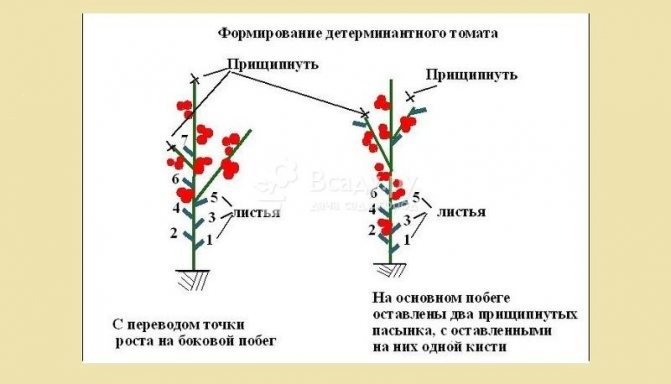

In the open field, it is advisable to form a Rocket tomato into 4 stems, and when grown in greenhouse conditions - no more than 2 stems.
It is also required to regularly remove the appearing stepsons.
Top dressing
The yield of this variety directly depends on the regular application of fertilizers. During the budding period, any organic matter is introduced under the Raketa tomato bushes - usually an infusion of mullein diluted with water in a ratio of 1:10 or bird droppings in a ratio of 1:20 is used.
During the period of fruit ripening, the bushes of this tomato should be fed with complex mineral fertilizers, which must contain potassium and phosphorus. The interval between these dressings should be at least 2 weeks.
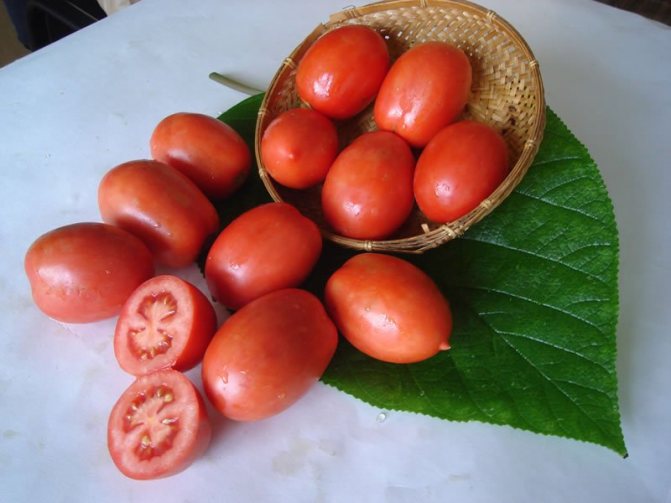

Useful Tips
A detailed description of the variety allows the summer resident to find out the strengths and weaknesses of the culture, in order to determine in the future whether the variety will be able to bring a good harvest in its garden conditions. In order for the Raketa variety to please with its yield, several rules must be observed.
Firstly, the seedlings at the time of planting must be fresh, otherwise the bush will lag behind in growth, which will lead to the fall of the first flowering. Secondly, in order for the fruits to set and ripen faster, it is necessary to carry out foliar feeding. The solution must be sprayed onto the surface of the plant. Top dressing can be prepared on the basis of superphosphate. Thirdly, from time to time it is necessary to remove the lower leaves and side shoots, this will speed up the process of fruit ripening and improve the ventilation of the lower part of the bush.
If the bush is lagging behind in growth and has a pale color, then the soil should be fed with a mullein.
Leaves begin to curl when there is not enough nitrogen fertilizer. Excess phosphorus in top dressing is manifested in the yellowing of the foliage. And with a lack of potassium, the tomatoes acquire a variegated color, and the bush gradually dries up.
Watering and foliar feeding is best done in the afternoon or in cloudy weather to avoid burning the leaves.
Tomato Rocket: reviews of those who planted
Reviews about the Raketa tomato can be found without difficulty, and they are almost always positive, since the variety has already passed the test of time and many gardeners.
Valya, 40 years old, Izhevsk region: My garden is quite large, and I annually occupy about half of the area for different varieties of tomatoes. I have been growing the Raketa tomato variety for 4 seasons. I pre-grow the seedlings of this tomato in mid-March, and in mid-May I plant half of the seedlings in a greenhouse, and the other part in open ground. This variety suits me because the bushes are compact, practically do not require formation and garter. And small, even fruits are ideal for whole-fruit canning.
Liza, 45 years old, Khabarovsk Territory: I read about this tomato variety on the Internet and decided to plant at least one Raketa tomato bed in my garden. I can say that tomatoes of this variety are small, even, with a dense skin, they tolerate heat treatment well. Therefore, I use the harvest from this variety mainly for conservation. Bushes that are grown in garden beds are best tied to supports so that they do not break in strong winds.
Anyuta, 50 years old, Leningrad region: I think that Raketa is one of the best tomato varieties that I have grown in my garden. Bushes do not need to be tied up and shaped, they tolerate drought well. The main thing is to prevent waterlogging of the soil and to apply fertilizers regularly. From tomatoes of this variety I prepare adjika, which is liked by all my homemade ones.
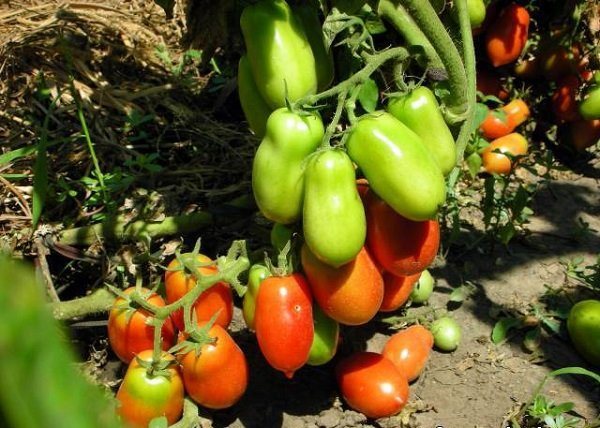

Tomato Raketa is one of the few fruitful varieties of Russian selection, which is distinguished by its compact size, resistance to major diseases and an excellent taste of ripe fruits.
But when growing this variety, it should be remembered that the Rocket bushes require compliance with the irrigation regime and regular feeding.
Diseases and pests
To obtain a large number of Raketa tomatoes, the future crop must be protected from harmful insects, such as:
- Colorado beetles;
- naked slugs;
- gnawing scoop.
Insects on a small scale can be eliminated mechanically or with the help of folk recipes, and it is better to eliminate the invasion of pests with chemical insecticides.
The Raketa variety is immune to gray rot, but tomatoes can be infected with other infections, including:
- late blight;
- mosaic;
- leaf spot.
Drugs for fighting diseases depend on the type of infection, so it is necessary to compare the symptoms with the photos of diseases on the Internet and choose the appropriate remedy. When in doubt, it is best to use a generic fungicide.

